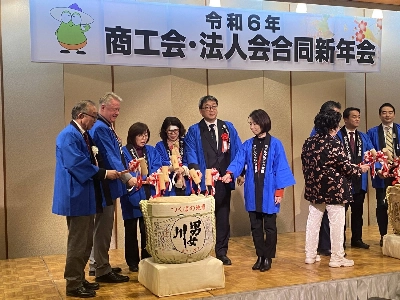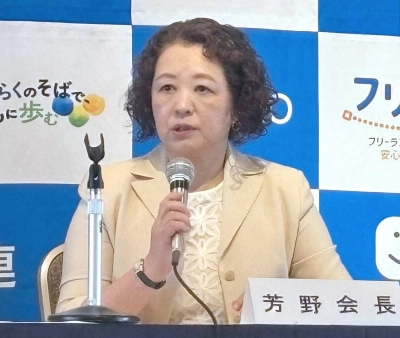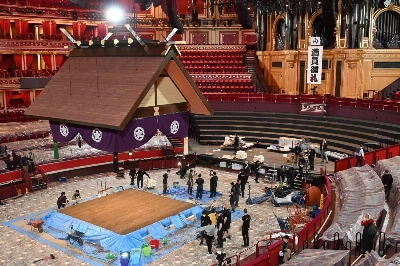What must it be like to stand on top of the world's highest mountain? To battle through driving snow and across deadly glaciers, to scale icy rock walls and risk falling thousands of meters while being hit full-on by raging, freezing winds -- aware that an avalanche could, at any moment, swat you into oblivion?
Alpinists all over the world dream such nightmarish dreams -- but, of all those who have scaled Mount Everest, Takeshi Yamamura is one of the youngest, and certainly the youngest Japanese.
Last year, at the age of 20, Yamamura went on an expedition to the Himalayas along with graduates of Tokyo University of Agriculture, at which he is presently a senior. From his high-school days, Yamamura has mountaineered all over Japan. But Mount Everest, rearing up 8,848 meters on the Nepal-Tibet border, was his first-ever climb abroad. "I'd always wanted to climb a mountain overseas, and it was just by chance that my first experience was Mount Everest," said Yamamura.
"But some veterans in Nepal did tell me that I should really be climbing mountains in order, instead of starting off with the highest in the world," he added with a laugh.
He did, however, understand that advice, because more and more inexperienced alpinists try to climb Mount Everest every year -- and too many are ending up dead or badly hurt and requiring an expensive, and often dangerous, rescue operation. Understanding the advice, though, didn't mean he thought of himself as someone who should take it.
"Before the climb, I had some fears about death," said Yamamura. "But by the time you've been climbing for such a long period of time, death does not scare you. Instead, I said to myself, 'I'll climb this mountain even if it kills me.' "
Being inexperienced in such conditions and at extreme altitudes, Yamamura trained hard for the expedition. This included his regular routine of jogging and scaling climbing walls at gyms, as well as driving an hour from Kamakura where he lives to run up and down the Tanzawa Mountains in Kanagawa Prefecture to raise his fitness level even higher.
None of this, though, really prepared the young climber for what he was about to experience.
"Mount Everest made all of the mountains in Japan seem like little hills," he said. "I learned that to climb a mountain like that, mental strength is even more important than physical, because there were times when I just wanted to give up."
For almost two months, Yamamura and his group went up and down, to and fro between Everest Base Camp at 5,300 meters and four higher ones that eventually served as a springboard for the climbers to make their summit attempt. It also allowed the necessary acclimatization to extreme high altitude at which there is so little oxygen in the air that every movement is a physical test.
"I checked the oxygen level in my blood when I was climbing and the result was shocking," said Yamamura. "A normal person usually hits 98 to 100 percent, but there, I had only 50 percent in my blood. One breath from an oxygen tank brought me back to 90 percent, though."
But that was not all that weighed Yamamura down, because throughout the whole journey he carried with him his own excreta. Why? Because this trip -- arranged to commemorate the 80th anniversary of the university's mountaineering club -- was not just about climbing. In fact the students, graduates and a teacher who made up the group were on an environmental mission.
During the expedition from March to mid-June last year, the group was on Mount Everest with half of them in charge of environmental research at the Base Camp and the other half doing an environmentally friendly climb. One of Yamamura's duties as a member of the alpinist group was to collect all his body waste in a bag.
"One of the biggest problems associated with mountain climbing is incontinence," said Yamamura. "In Japan, Mount Fuji was infamous for that, and Mount Everest was also dirty."
To prevent pollution, the alpinists took along special plastic bags that are strong enough to prevent their contents from leaking or any odors escaping. So, along with two oxygen tanks weighing 3 kg each, the climbers had to hump these baggies along too. Yamamura, though, had another surprise in the bag.
"My body had a hard time getting used to the lack of oxygen, and because of that, I threw up most of what I ate," he said sheepishly. "So, I had to carry my vomit in the bags as well."
Not one of the climbers in his group gave up, and no matter how heavy their loads, they carried them all the way back. "That should be basic for alpinists," he said.
"I cannot understand how people can leave refuse on the mountains," he said. "There were banana skins and plastic bottles just lying around. Some people even leave their empty oxygen tanks behind, and some throw tanks off the edge after reaching the summit. Those things will stay there forever unless someone does something about it."
But that, in large part, was precisely why the group was there. So, while Yamamura scaled the mountain -- reaching the summit on May 22, 2003 -- Hijiri Shimojima, a graduate student at Tokyo University of Agriculture, was among those who stayed at the Base Camp to assess just how dirty Mount Everest had become and what could be done to prevent further pollution.
Data from the Sagarmatha Pollution Control Committee, a local environmental group, reveal that in fiscal 2002/03, the total amount of garbage collected on Mount Everest -- whose Nepali name is Sagarmatha -- amounted to 319,924 kg, a massive rise from the 126,373 kg in fiscal 1994/95. Even so, these totals are only for solid rubbish, as they exclude excreta and waste water.
In this latter respect, Junko Tabei -- the Japanese who in 1975 became the first woman to climb Mount Everest -- in 1999 estimated that the total amount of urine discharged on the mountain since the first climbers went there in 1921 was an astounding 1.07 million liters. And it's all still in the glaciers or went into streams that carried it down to the fields and paddies of those living below.
"I think that such invisible liquid waste is more of a problem than solid waste, and must be taken care of," stressed Shimojima. "Unlike on normal ground, there is no soil on the glaciers, which makes bacterial decomposition very difficult."
As Base Camp manager, Shimojima ran around every day to do tests. Although his group originally numbered nine, most were students and had to go back to school. So in the end Shimojima had to get the job done on his own.
"I had no one to help out, so I often grabbed a local from around the Base Camp," said Shimojima. "It was hard communicating, though, so I had to use a complete mixture of Japanese, with English and Nepali, neither of which I am very good at."
Nonetheless, with the help of these people, Shimojima managed to accomplish quite a bit.
First, he conducted a topographical survey to pinpoint the location of each tent. During his stay, he found that there were 35 parties with 665 tents in all. Questionnaires were then handed out to these parties, asking how many people they comprised, how much stuff they had brought and the number of yaks used to carry it. From such research, it emerged that during this pre-monsoon climbing season, a total of 115 tons of material had been taken to Everest Base Camp, including the 6.5 tons with the Tokyo University of Agriculture group. Furthermore, more than 2,300 yaks had been used by the climbers. "That meant more excreta for the mountain," said Shimojima.
Water examination was another part of his job. Testing several areas at the Base Camp, Shimojima found that the level of COD (Chemical Oxygen Demand, a way to measure the level of water pollution) at the main collection point for water used to drink or for cooking was 10 mg per liter. This compares very unfavorably with the environmental standard in Japan, which is 3 mg per liter in a similar environment, said Shimojima.
Aside from the research, Shimojima and the others in his university group took with them as much environmentally friendly equipment as possible, including a filtering device for domestic waste, a solar-powered cooker that could heat water to 80 degrees from 4 degrees in 20 minutes -- and even a portable bidet shaped like a plastic mustard bottle with a nozzle, so they didn't need to use toilet paper.
"While I was there, I found that many other groups were also trying as much as possible to protect the environment," said Shimojima. "For example, they too had solar panels to cut the use of petroleum."
More and more people are aiming for the summit of Mount Everest. Yet, it is estimated that only some 2,000 have made it so far.
"It may not have that much effect on the local people now," said Shimojima. "But the more popularized Mount Everest becomes, the graver the situation will get. That is, unless we act now."

























With your current subscription plan you can comment on stories. However, before writing your first comment, please create a display name in the Profile section of your subscriber account page.